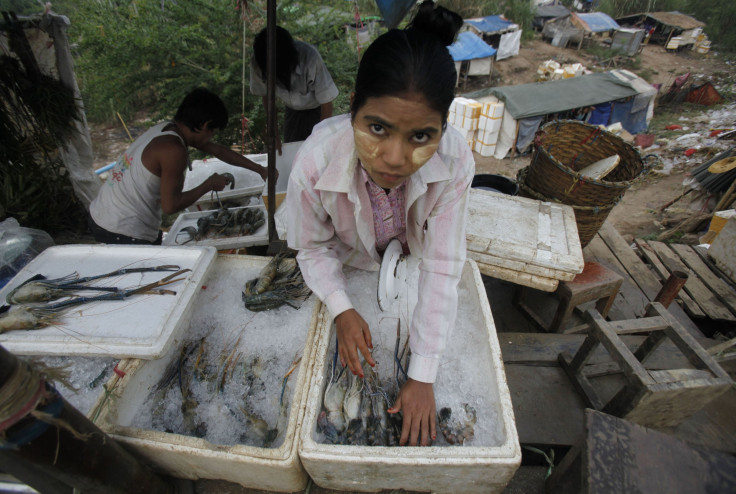Thailand Fisheries: EJF Report Reveals Rampant Human Trafficking, Slavery And Violence In Big Seafood Industry

For many seafood fanciers in Europe and the U.S., the price of your meal is much larger than it appears. New reports show that Thailand’s billion-dollar seafood industry has a dark secret: It is a hub of underreported violence and human trafficking.
An investigative report released by the Environmental Justice Foundation, "Slavery at Sea," asserts that Thailand’s flourishing fisheries are a breeding ground for human trafficking and exploitation, presided over by ship captains, local businesses and corrupt officials.
“Migrant workers in the Thai fishing industry, many of them trafficked illegally, are suffering terrible abuses and all too often denied their basic human rights,” said Steve Trent, executive director of EJF. “These people are Thailand’s ‘seafood slaves,’ forced to work to prop up the cash-rich fisheries industry of the world’s third-largest exporter of seafood.”
Of the hundreds currently held in indentured slavery or trafficked into the fishing business, one 21-year-old Burmese man managed to escape after suffering months of abuse and unpaid labor. He was one of 36 migrants from neighboring Myamnar who were recruited with promises of a “good job with overtime pay at a pineapple factory,” when they were trafficked into Thailand. A year ago, the group was instead sold into various Thai fishing vessels in Samae San, located in Chonburi province, south of Bangkok. In an interview with EJF, the victim recounted three men who were “lost” along the way, including one elderly man he believes was murdered for refusing to work on the vessels.
The Burmese and his crew ended up working on the Thai fishing ships for 10 months without any compensation, enduring several bouts of violence before he was able to escape. “I made a mistake by opening the box where the fish are stored and he hit me from behind,” he said of his captain. “It was so hard that I was knocked unconscious and he smashed my face against the ice.”
He was hit with such force, he was left partially deaf.
These Thai fisheries provide a huge percentage of the world’s seafood. Thailand is the third-largest seafood exporter in the world, after China and Norway, with exports valued by the Food and Agriculture Organization at around $7.3 billion in 2011. And U.S. seafood imports from Thailand exceeded $1.6 billion last year, with most of the country’s clams and shrimp being imported from Thailand and other Asian countries.
The big money that Thailand’s fisheries draw in internationally has flowed mostly into the pockets of a handful of extremely influential and likely corrupt members of the community. A case in 2013, where victims were rescued from the Kantang region of Thailand, revealed the corruption that pervades the industry. A senior official with the Royal Thai Police involved in the Kantang case told EJF that he was on the receiving end of calls from numerous powerful figures urging him to stop his investigations into the local businessmen whose pier and fishing boats were associated with the case.
Part of the problem, the EJF report says, is Thailand’s persistently unregulated substandard management of its fisheries. The Thai government’s chronic failure to establish and enforce regulations for fishing fleets and recruitment standards has only exacerbated the problem, EJF’s Trent says. “Stocks have been overfished and declining catches have led to operators cutting costs further by using slave and forced labor, keeping them at sea longer to make the catch.”
“Our governments and the international seafood industry simply cannot continue to ignore this,” Trent added. “They must demand immediate reform and action to stop these abuses or refuse Thai seafood that is produced by slaves.”
© Copyright IBTimes 2024. All rights reserved.






















